
Measuring key performance indicators (KPIs) for your website’s search engine optimization (SEO) efforts should be non-negotiable. We’re way past the WHYs on its role in your online success.
The real question you should be asking is — “what SEO KPIs should I be measuring to determine business success?”
Tracking SEO performance is one thing but knowing which KPIs can help you spot potential problems or opportunities online is another can of worms in itself.
Why? Because there are tons of data and SEO KPIs you can use but each metric is situational to your type of business.
The solution lies in knowing what SEO metrics contribute to your organic presence and business growth in search. Conducting this along with some tried-and-tested SEO tips can help improve your search rankings and presence.
Let’s get straight to it then. Here are 9 SEO KPIs that you should be tracking to win in search grouped into three categories: business value, output KPIs, and performance metrics.
Doing so helps you better understand the umbrella idea behind every SEO KPI mentioned in this article.

Helpful tools to measure your SEO performance
There are a plethora of tools out there that can help you track SEO KPIs, but it can be hard to decide which ones are worth using. Here are recommended SEO tools that let you get the job done.
Measurement tools
Google Analytics (GA)
This is the most widely used analytics tool among businesses online. Google Analytics lets you do data collection, analysis, monitoring, visualization, reporting, and integration to identify trends and patterns in how visitors engage with your website.
Google Search Console (GSC)
Monitor, maintain, and measure your site’s Search performance with this free website service tool that helps you understand and improve how Google sees your site.
Technical SEO and website audit
-
DeepCrawl
This cloud-based web crawler provides flexible crawl types to monitor your technical SEO performance. This includes capabilities for crawling your staging environment, external sites, analytics data, backlinks, sitemaps, and URL lists.
-
BrightEdge
This AI-powered SEO platform makes your content performance management easy and measurable to create engaging content that can improve your search engine rankings.
-
seoClarity
If you need an enterprise website audits tool, seoClarity provides a diverse range of technical SEO health checks perfect for troubleshooting unexpected ranking dips.
Search performance and online visibility
-
Ahrefs
You can use this tool to check SEO issues and marketing opportunities for your business to scale search visibility. This SEO software features tools for link building, keyword research, competitor analysis, rank tracking, and site audits.
-
SEMRush
These are advanced SEO tools often used for keyword research and online ranking data. SEMrush also features capabilities that can analyze your competitors’ SEO metrics to create content that can outrank them in search.
-
Moz Pro
Gather data on your site’s rankings, page optimization, site crawl, and link metrics with this handy SEO tool. Moz Pro is useful for finding website errors affecting visitors’ experience.

Top SEO KPIs your website should be tracking
Business value
Let’s admit it. Regardless if you’re an ecommerce website or a B2B/B2C company, you’re doing SEO for value creation. And you’re not wrong. More organic traffic should mean more business value after all.
Understanding business value as an SEO KPI lets you make decisions that are truly aligned with your company’s bottom line. Rather than simply guessing which tactics correspond to profit, getting a grip on business value lets you measure results from a return on investment (ROI) standpoint and adjust SEO campaigns accordingly.
Here are SEO KPIs that measure the business value.
Marketing Qualified Leads (MQLs) and/or Sales Qualified Leads (SQLs)
This SEO KPI lets you separate the onlookers and potential buyers who are visiting your website.
But conducting lead generation doesn’t just depend on the quantity of leads you’re getting. You should also look at the lead quality which is a factor that lets you identify how likely a potential customer can become a buyer.
There are two ways you can look at lead quality.
The first is closing potential, which describes how easy it is to turn a potential lead into a customer. The next, revenue potential, looks at how much a lead can generate over a time period.
While both are important, not all leads hold the same potential in terms of profitability. That’s where lead qualifying comes in to assess if a lead has the right balance of closing and revenue potential for your business.
A leads management system (LMS) or Customer Relationship Management (CRM) is the most common platform to handle and assess these leads coming in from different channels such as search, social media, ads, website inquiries, and email campaigns.
Each LMS is unique per industry depending on where you’re getting leads. You can also opt to develop your own LMS or outsource a third-party provider to make one specific to your business or simply subscribe to a popular (but useful to your business) CRM out there.
Conversion and conversion rate
What’s the point of generating organic traffic if you’re not getting any conversions out of it?
This SEO KPI is not always easy to track, especially if you have varying goals like a newsletter or a purchase.
That’s why setting up conversion tracking on your website like Google Analytics or Firebase is essential to keep tabs on the actions your customers are taking when visiting your site.
But how will you know if your conversions are going great? To answer that question you need to look at your conversion rate which can be summed up in the following formula:
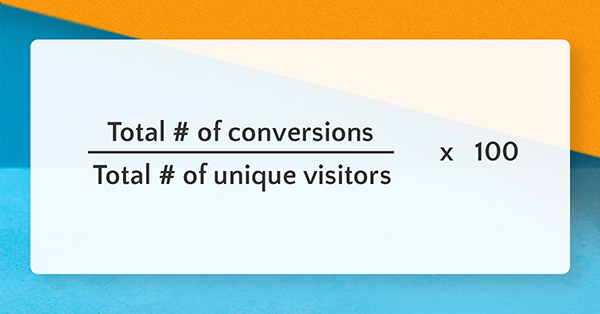
A good conversion rate can play around 2-4%. If you’re hitting around 10% above then congratulations! You’re already 90% better than most of your competitors online. But this is not set in stone. You should keep challenging your conversion rates through experimentation or A/B testing at least.
Customer lifetime value
In terms of business growth, it all boils down to your customer lifetime value (CLV), an SEO KPI that measures the total earnings your business can expect from a typical customer.
Tracking CLV lets you have the big picture on how to maximize profitability online through SEO.
You can compute CLV through the following formula:
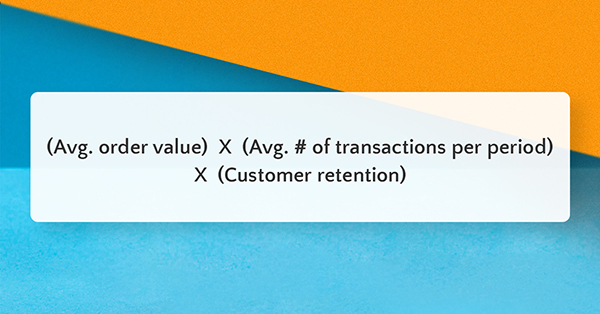
Here’s a rundown of what each input means to your CLV.
- Avg. order value. How much do you make per sale of your product or service?
- Avg. # of transactions per period. The frequency of transactions you normally get within a time period.
- Customer retention. Depending on your industry, customer retention looks at how long the average customer is loyal to your business.
By understanding CLV, you can make decisions about where to allocate your resources in order to maximize ROI. Additionally, measuring CLV can help you identify areas where your business might be losing money, so that you can take steps to improve your bottom line.

Output KPIs
Sure, you can measure your SEO progress by looking at your traffic numbers. But if you really want to get a sense of how well your SEO efforts are paying off, you need to look at your output KPIs.
This SEO KPI measures the results of your SEO activities, rather than just the activity itself. This means they can give you a much more accurate picture of how effective your SEO strategy is.
Here are output KPIs that measure your website’s SEO performance.
-
Organic traffic and sessions
This SEO metric is already self-explanatory. These are visitors who come to your website organically without clicking an ad.
But getting traffic isn’t exactly synonymous to success. That’s why you have to assess and measure it first.
Through analytics and website tracking, here are SEO engagement metrics that can tell if the quality of organic traffic you’re getting is good or bad based on industry standards.
- Avg. time on page. The average amount of time spent on a single page. This can be computed through the following formula along with indicators that tell you if your avg. time on page is good, average, or bad.

- Avg. pages per session. How many pages a visitor can browse in your website within a given session (usually lasts until 30 minutes of inactivity). This can be computed through the following formula along with indicators that tell you if your avg. pages per session is good, average, or bad.
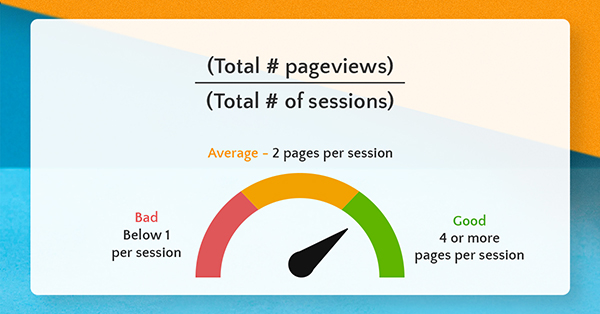
- Bounce rate. Visitors who leave your website without taking a single action. This can be computed through the following formula along with indicators that tell you if your bounce rate is good, average, or bad.
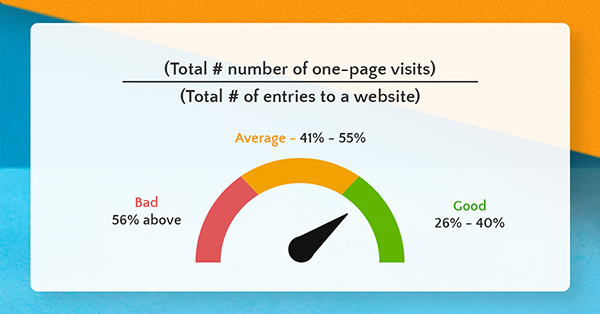
-
Organic visibility
You know your SEO efforts are working when your website appears on the search engine results page (SERP) for relevant keywords.
Organic visibility demonstrates how well your site is ranking for key terms, and how much search traffic it is receiving. Higher organic visibility means more people will see and likely visit your website.
While there are a number of different factors that influence organic visibility, some of the most important ones include:
- Keyword ranking. Your website’s position based on relevance to a specific search query. Conducting keyword research is a proven best practice that improves this lever.
- SERP Feature visibility or ranking. It is best to identify which specific SERP feature you are present. This will give some insights on which type of intent your content is mostly relevant based on search algorithms and searchers’ activities.
- Organic Search Impression
This measures how many times your website came up in search results even if the users didn’t click it. You see this using Google Search Console. This KPI can provide you tons of information on which content you would want to focus on in driving more search engine visibility.
-
Average Position
This essentially is another source of truth using Google Search Console, which measures the average keyword position of certain queries shown in the GSC query report.
-
Organic Click
This measures the number of clicks you’ve gained showing your website URLs to searchers and ultimately, a percentage of these clicks turn into organic traffic.
You may consider this KPI more of an engagement metric through organic search since you were able to get the searchers engaged on your search results compelling them to click on your website’s link.
-
Organic click-through rate (CTR)
This measures how often people who see your website in search results click on it.
A high organic CTR means that your website is relevant and appealing to searchers, which in turn will help you rank higher and eventually increase organic traffic.
A low organic CTR, on the other hand, could indicate that your website content needs improvement.
There are a number of factors that can impact your CTR, such as the position of your website in search results, the relevance and intent of your content on SERPs.
Here’s how you can measure your CTR to see if you’re doing well online according to industry standards. You can easily view the metrics needed via your Google Analytics data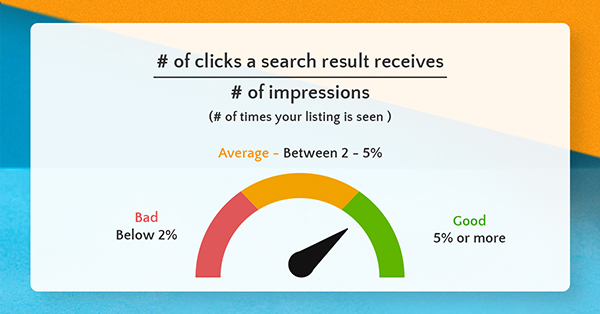
-
Link Acquired
Backlinks are important to build authority online. Doing link audits and analyses helps you determine the quality of backlinks your website is getting. It can help you understand if your content marketing for search campaigns are actually working well or not.
There are a myriad of SEO tools like Ahrefs or SEMRush which can help you pinpoint specific keywords and content ideas that let you generate significant visibility to rank better in search.
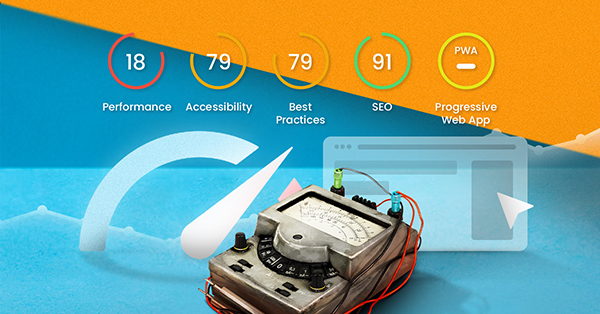
Performance KPIs
These SEO KPIs dwell more on the aspects affecting your website performance in reaching your website goals. If left unchecked, this could damage your page experience and lower your ranking.
Here are performance metrics you need to track and maintain.
-
Page speed and load time
As the world increasingly moves online, the importance of having a fast, responsive website becomes even more important. Page speed measures how quickly your web pages load.
There are a number of factors that contribute to page speed, including the size of your images, the length of your code, and the number of external JavaScript files you’re loading.
There are a number of tools that you can use to measure page speed, including Google’s PageSpeed Insights tool and Pingdom’s Website Speed Test. In general, you should aim for a page speed of less than 2 seconds.
When it comes to page speed, focus on functionality rather than aesthetics. Even if your page looks awesome with all the trendy designs, it wouldn’t be great for your audience if it takes forever to click on one feature.
-
Core Web Vitals
This measures your website’s page performance benchmarked against other sites out there. The three main metrics are:
- CLS – Cumulative Layout Shift
- LCP – Largest Contentful Paint
- FID – First Input Delay
A comprehensive explanation of these three main metrics of Core Web Vitals is available at Google Search Console Help
- Crawl errors
This SEO metric tells you when a search engine bot (also known as a “spider”) tries to access a page on your site and is unable to do so.
This can happen for a number of reasons, including broken links, incorrect redirects, or pages that have been removed altogether.
While having a few crawl errors here and there is not necessarily cause for alarm, if you have a large number of them, it can impact your website’s SEO and overall performance. That’s because search engines may view your website as being less user-friendly and lower quality. This in turn can lead to your site being penalized or even removed from search results entirely.
GSC’s Crawl Stats report feature is a great tool that lets you track, diagnose, and resolve prevailing crawl errors in your website.
-
Top exit pages
There’s this old saying, “small holes sink big ships”, and this drives the value of top exit pages as an SEO KPI you should be tracking.
Top exit pages are the pages on your website that visitors are most likely to leave from. Why is this important to your business? Because it can give you insights into where people are dropping off your site, and what kinds of content or products they’re not interested in.
Knowing this helps you make adjustments to your site content and navigation with the aim of keeping people engaged and reduce your bounce rate.
In addition, monitoring your top exit pages can also help you to identify any technical issues on your site that may be causing people to leave.
You can find this information in your Google Analytics account under Behavior > Site Content > Exit Pages.
Conclusion
Defining your SEO KPIs from the get-go would definitely help you succeed in your goals. More importantly, it’s critical to know which exact metrics are impactful for business and track those.
Pro-tip: Only use those metrics that can provide you actionable insights and are aligned to your business goals. If they don’t, then don’t bother tracking them.





